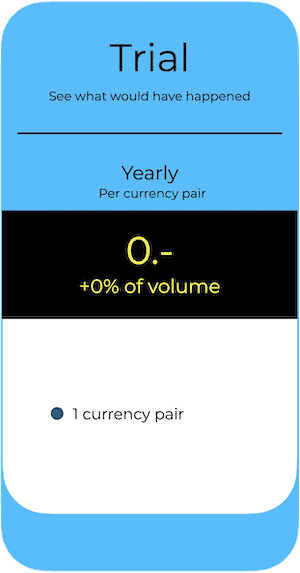Given the ongoing negotiations with Canada, Trump’s recent announcement to impose a 35% tariff starting August 1, 2025, is frustrating. Canada is an important trading partner and neighbor. Trump’s approach is probably intended to put significant pressure on Canada during the negotiations.
As the withdrawal of the digital tax in Canada shows, pressure works. Trump wants the best deal for the U.S., which may now come at Canada’s expense.
Personally, I see the situation as choosing from several evils. You could try to let Trump run his course, but he might become more aggressive. Or, you can give in to him, which could lead him to interpret this as weakness and keep coming back with demands.
Personally, I think the first approach is wiser. The second way is an open invitation to permanent blackmail because you’ve already shown that you can be blackmailed.
The USD Will Significantly Weaken in the Medium Term
In the short term, a technical correction cannot be ruled out. Overall, however, the world is heading towards a multipolar order. This will create more uncertainty, but it will also prompt many states to reorient their approach to protecting their interests.
The USA’s increased selfishness is causing many states to shift their alliances and interests.
I believe it is certain that ongoing processes will continue and lead to a shift in how foreign trade surpluses are invested. Currently, these surpluses are almost exclusively invested in USD.
Exchange Rates Follow Portfolio Flows
Over the past 15 years, investing your money in the USA was a safe bet.
The USD was purchased due to rising security values driven by high fiscal deficits. USD hedging was eliminated because the rising USD generated additional returns.
Although portfolio investments remain in the U.S., the inflow of new capital has declined, and some portfolio managers have begun hedging against further declines in the U.S. dollar. There have only been a few instances of capital being withdrawn from the USA, mainly by Asian investors.
The extent to which US capital markets are overvalued is enormous and far exceeds levels seen at the turn of the millennium. The question is not if, but when, foreigners will invest less in the US or withdraw their holdings.
The risk for the USD is enormous. Foreign capital attracted over the last 15 years may leave much more quickly. Foreigners hold 25% of all government bonds and around 18% of all equities. This equates to approximately 30% of GDP for bonds and around 38% for equities. In other words, more than $20 trillion.
This type of eutrophication is unhealthy, and if a stratification is set in motion, it can lead to an avalanche of chain reactions.





